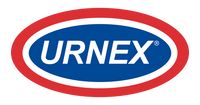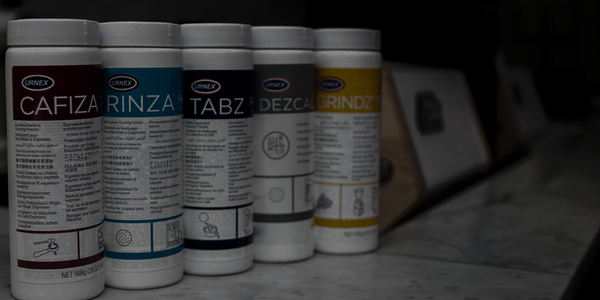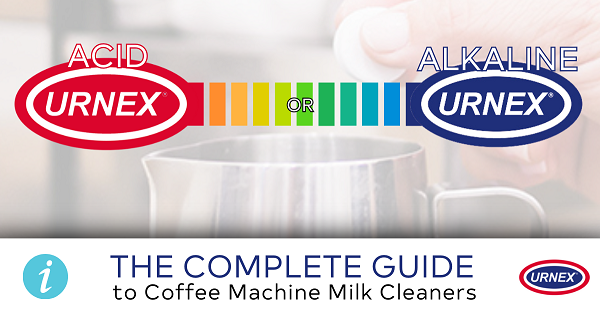When people think about sustainability, the focus is usually on end-of-life outcomes for the products we use. Here’s how we at Urnex apply a holistic approach to product formulation, manufacturing and global logistics.
You’ve probably heard the phrase “Reduce. Reuse. Recycle.” at some point in your life. Although the origin of this phrase is unclear, it’s believed to have caught on in 1976 when the United States Congress passed the Resource Conservation and Recovery Act. According to the Environmental Protection Agency (EPA), which was created just six years before this bill was passed, the act “is our nation’s primary law governing the disposal of solid and hazardous waste” and gives the EPA “the authority to control hazardous waste from cradle to grave.”
Most of the messaging around environmental conservation focuses on the last part of an item’s lifecycle: the moment where a consumer has to decide where an item goes. Does this bottle go in the trash, or can it be recycled? What constitutes waste versus something that can be brought to a recycling station?
However, being environmentally conscious requires a closer look at that old, familiar phrase, “Reduce. Reuse. Recycle.” It isn’t just a reminder of ways we can be better stewards to the planet - it’s written in order from most-to-least impactful. The EPA has a waste management hierarchy that outlines the most important factors to diminishing our environmental footprint, starting with reducing consumption of harmful products and working down from there.
Most of the messaging around this hierarchy focuses on the end: recycling. And recycling is important - it’s one of the easiest ways consumers can take charge of their environmental footprint, but the impact of reducing waste and reusing resources is far higher than recycling. A singular focus on recycling can unfairly shift the burden of environmental responsibility onto consumers, even though just 100 companies contribute 71% of the world’s greenhouse gas emissions.
All three tenets of the phrase “Reduce. Reuse. Recycle.” are key to building a sustainability plan. At Urnex, here’s how we approach each of these principles and incorporate them into our commitment to create responsible and effective cleaning products.
REDUCE
To reduce our environmental impact is to start at the beginning. According to the EPA, “before an incident occurs, communities can take steps to reduce the amount and toxicity of incident-generated waste. The initial planning and preparation efforts communities take to minimize the amount and toxicity of incident-generated waste have several environmental benefits (e.g., reducing the amount of new materials needed to rebuild), as well as economic benefits.”
At Urnex, this means we carefully consider what chemicals we use to make our products. “When we begin development of a new product, we first look at ingredients that are plant-based, to see if they are capable of achieving the desired cleaning objective for the intended application or piece of equipment ,” says Kofi Amoako, Technical Director and head of R&D for Urnex. “We always start with good ingredients and go from there.” Some cleaning chemicals are more harmful to the environment than others when they enter water systems, so we aim to create formulations that can be safely used without worry.
To this end, Urnex employs a team of chemists and scientists who evaluate the risk and toxicity of individual components that make up our cleaning formulas and how these components will react when combined. This is done through extensive research: our scientists identify potential hazards throughout the supply stream, isolate compounds that could be hazardous, and develop new formulas that can perform well while still reducing our environmental footprint.
We also put a big emphasis on reducing waste because it’s the most impactful step in the sustainability chain - and that means thinking about how our customers use our products. That's why we've converted almost every single product in our portfolio to a tablet. Waste is often generated through improper dosing techniques (we’ve all likely experienced or seen folks use too much of a product when just a small amount would be appropriate), so we focus on making products in a way where users use the exact amount needed without guesswork or additional steps for measurement. While ultimately we want to help our customers enjoy better coffee, we also want to make cleaning easy, seamless (and maybe even fun).
Because we're a global company, we think carefully about how we send items to our partners in more than 70 countries. Our widespread use of powders and tablets reduces the shipping weight of items from our New York facility and gives more usable product to our customers. For example, a single jar of 40, 10 gram milk cleaning tablets weighs 1.1 pounds and makes 40 liters of cleaning solution. Our equivalent liquid milk cleaner in a 1 liter bottle makes just 33 liters of cleaning solution and weights 2.5 pounds - more than twice as much as the 40 tablet jar. By focusing much of our business on tablets and powders, our partners don't have to order from us as often, and we cut back on energy expended during transport.
REUSE
To reuse an item is to find a new application for something that was once used for something else without changing it. Most people reuse materials at home all the time - if you finish a tub of yogurt and then use it as a container for leftovers, or donate old electronics to a charitable organization, or buy clothes from a secondhand store, you’re actively reusing materials that previously had a different function or were enjoyed by others. Reusing items is distinct from recycling them because most items that are recycled need to be treated or processed to be reused again.
Thinking about reusing sources isn’t just about physical products, but also informs the way Kofi and the R&D team formulate new products. “We work backwards to solve a problem,” he says. New products can take anywhere from three to six months or more to go from idea to actual product, and the deep experience and knowledge our R&D team shares allows them to make effective products without too much trial and error. Instead of formulating dozens of prototypes, many of which will never work, our R&D team can focus on identifying exactly how a product needs to work and the formulas they know that have proven effective to do so.
Kofi shares this example: “Let’s say we’re designing a milk cleaner. First, we identify what we want the cleaner to do, which is to clean and dissolve milk fat without scrubbing. We want it to be able to denature proteins. We look at it from that angle and make a selection of ingredients that will, when combined, will tackle each of the goals we’ve identified.”
Once the R&D, Sales and Marketing teams identify and isolate the variables they want the cleaner to tackle within the designated application or piece of equipment, R&D and Manufacturing then make a prototype and rigorously test it. Our decades of knowledge building, training and continuous learning have allowed us to operate efficiently and cut back on waste. If we're using a particular item in a new formula, it’s because we have background knowledge or past experience that have led us to know this item is effective. And oftentimes, when a formula doesn’t work out exactly the way we've imagined, we’re able to take lessons from testing and apply them to new products and formulas. “When something doesn’t work out," Kofi adds, "let’s say we’re trying to make a tablet and it doesn’t compress the way we thought. But we were still able to take away knowledge from this process and use it somewhere else.”
RECYCLE
Recycling is an action most people are familiar with. Many cities and municipalities require people to sort their waste and divert recyclable items like cardboard and plastic bottles away from landfills. When these items are recycled, they are processed and turned into other items. You might have even picked up an item that said something like, “This is made from 100% recycled materials.” At Urnex, it’s important for us not only to make items that are recyclable but can feasibly be recycled as well.
What can be recycled is usually based on a city or municipality’s recycling facilities, and not every facility can accept every item. While 66% of paper and cardboard and 27% of glass is recycled, only 8% of plastics are recycled, and that often has to do with what processing facilities a city has to deal with its recyclable materials. Particularly when it comes to plastic containers, the material it’s made out of determines if it can be recycled in your community or not.
If you look at the bottom of a plastic item, there’s usually a triangle with a number located in the middle. The number in the middle corresponds to the type of material the plastic is made of, which can inform you if your local recycling facility can accept the material or not.
One way we work within recycling constraints is to make our containers out of materials that can be widely recycled. Almost all of our containers are made of high-density polyethylene, or HDPE, which has a #2 recycling demarcation. HDPE is commonly used for things like milk jugs, and shampoo bottles. Most cities accept items made out of HDPE, which get repurposed into things like pens, picnic tables, and drainage pipes.
-----
We know that sustainability is a mindset, not a finite goal. And at Urnex, we will continue to explore new ways to decrease our environmental footprint and provide you with reliable cleaning tools that’ll leave your coffee tasting great and equipment running smoothly.




